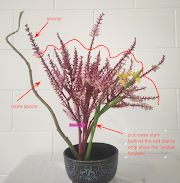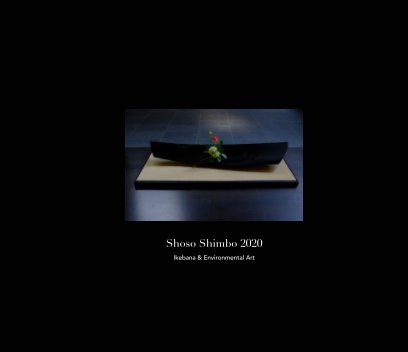Four Ikebana Elements Level 2.8- Colour 2 (27 August 2022)
Ikebana Aesthetics Program - Four Ikebana Elements Level 2
Learn about the four Ikebana elements online from February 2021. Beginners welcome. 日本からのご参加歓迎いたします。
Video Tutorial: See Avobe. Please follow our site or subscribe to our YouTube Channel.
Learn about the four Ikebana elements online from February 2021. Beginners welcome. 日本からのご参加歓迎いたします。
Video Tutorial: See Avobe. Please follow our site or subscribe to our YouTube Channel.
Facilitators: Shoso Shimbo & Shoan Lo
Who can Join: Anyone, regardless of ikebana school, stage of learning or country of residence. Beginners welcome. You must be familiar with Zoom. Sessions will be conducted in English.
Level 3 - Beyond Design Principles - Forms 3
When: (Melbourne, Australia Time) Check your local time.
2:00 - 2:30 PM (AEST), 17 Sept 2022
2:00 - 2:30 PM (AEST), 24 Sept 2022
2:00 - 2:30 PM (AEST), 1 Oct 2022
2:00 - 2:30 PM (AEDT), 29 Oct 2022 (Note: This session is AFTER the Australian Eastern Daylight Time (AEDT) has commenced on 2 Oct 2022)
How Many Participants: Up to 6 for each session
How Much: Aus $60 to join the program of 4 sessions.
Topic: Colour 2
Ikebana Aesthetics Program - Zoom Ikebana Dojo
Free Video Tutorial: Please follow our site or subscribe to our Youtube Channel.
Outline
In Colour, one of Four Ikebana Elements, we focus on colour schemes. As mentioned in Colour 1, if there is no colour schemes in your design, there is no poetry. Stop using any colour you feel like using, and any amount you feel like using without any consideration. Think and meditate on colours you are going to use.
First, check the basics of colour theory. Revisit Colour 1 to refresh your understanding of colour wheel and three types of basic colour schemes. Also, great resources are available online.
In Colour 2 we will explore complementary colour schemes, while practicing basic Nageire techniques again.
Complementary colour schemes: Colours opposite each other on the colour wheel are called compliments. Colour schemes that use such colours are called complementary schemes. Red - green, blue - orange, yellow - violet are examples of complementary pairs. They often create striking effect.
In relation to colour theory, it is useful to be familiar with following basic aspects of colour.
Colour consists of hue, intensity and value.
Hue: A name of a colour family
Intensity (saturation): The strength or weakness of a colour. A colour can be made less intense by adding grey to the colour.
Value: The degree of lightness or darkness in a colour. When white or black is added to a colour, it changes the colour’s value.
Intensity and value are bit confusing, aren’t they? Some argue “although value and intensity are different, they are used interchangeably”.
We will explore more sophisticated colour schemes in Colour 3. For more about Colour in Ikebana, refer to a short essay, "Introduction to Ikebana Aesthetics" by Dr Shoso Shimbo (available shortly in English & Japanese).
Objectives in Colour 2
1. Become familiar with using colour schemes.2. Try a complementary colour scheme in your design. Choose complementary pairs from the colour wheel. Follow the Session Notes for the ratio of the two colours.
3. Use Nageire style. Observe the result and feel the effect of the colour scheme.
4. Advances students may consider using more sophisticated colour schemes.
What You Need
1. Secateurs
2. Container - a tall vase.
3. Downstick
4. Flower materials:
a. Branch materials - Choisya
b. Main flower - Stock
c. A few additional flowers of complementary colour to the main flower - Rose.
Flower materials are guide only. You can choose any other materials as long as you focus on the topic.
How to Make It?
You will receive Colour 2 Session Notes with step-by-step instructions for making your arrangement after your payment. Our free video and the Session Notes will help you make your ikebana work.
What's Next? - Get Feedback
1. Book to join Zoom Ikebana Dojo. Use an application form on the page. That is the first step. Follow the instruction on the page.
2. Join Zoom Ikebana Dojo on 1 May 2021. Enjoy friendly feedback from our facilitator and other participants.
3. Post your work to Ikebana Gallery Award.
References
生花道場カリキュラム(日本語)





















